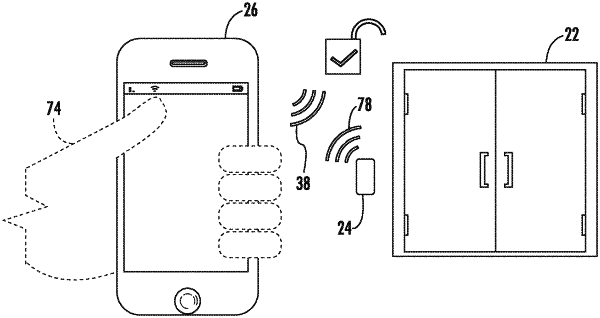| CPC G06F 3/017 (2013.01) [G06N 20/00 (2019.01); G07C 9/257 (2020.01); G06F 3/0488 (2013.01); G10L 15/22 (2013.01)] | 8 Claims |

|
1. A method of training a gesture-based access control system comprising:
using a software-based application of the gesture-based access control system to provide training instructions to a user;
wherein a first set of the training instructions instruct the user to perform a motion with a mobile device;
storing a first set of scenario data that results from the user performing the motion with the mobile device;
wherein a second set of the training instructions instruct the user to perform the motion with the mobile phone while performing a user-chosen event intended to cause an access assembly to unlock;
storing a second set of the scenario data that results from the user performing the motion with the mobile device while performing the user-chosen event intended to cause the access assembly to unlock; and
using the first set of the scenario data and the second set of the scenario data to perform an initial training of a machine learning algorithm to perform a set of tasks;
wherein a first one of the set of tasks comprises, based on receiving post-initial-training instances of the scenario data, and based on a first characteristic of the user-chosen event, initiating a process to cause the access assembly to unlock; and
wherein a second one of the set of tasks comprises authenticating the user based on receiving the post-initial-training instances of the scenario data, and based on a second characteristic of the user-chosen event.
|